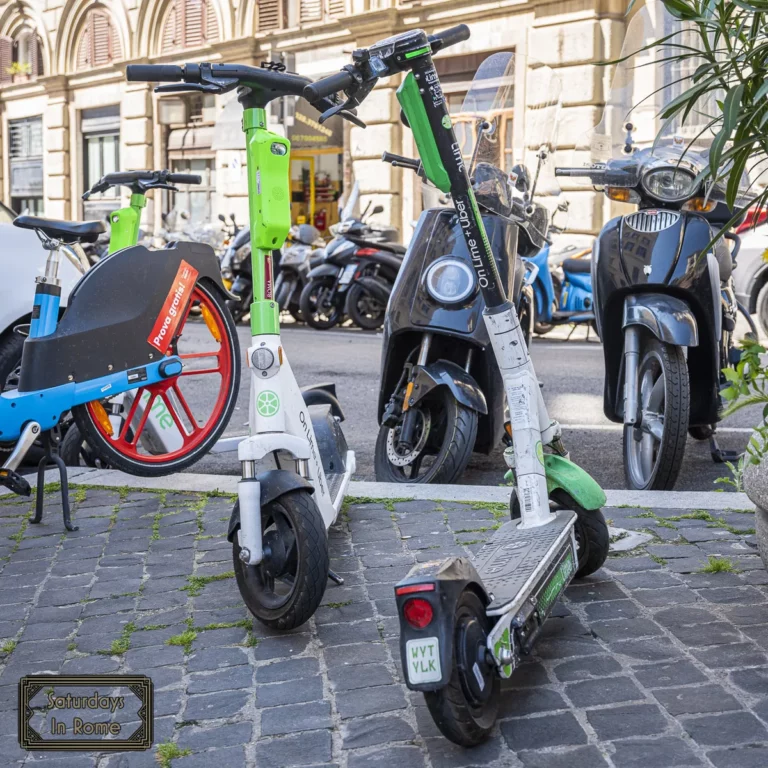Enjoying Roman Fruit And Vegetables In Season Is Amazing!
Enjoying Roman fruit and vegetables when in season is a special treat for visitors looking for the most flavorful ingredients possible.

In the US, people prioritize unlimited availability over quality when it comes to fruits and vegetables, and I was as guilty as anyone. I used to want strawberries in the middle of winter, and grapes whenever they were bright red, even if it was snowing outside, regardless of how they tasted.
In Italy, eating seasonal fruits and vegetables is the typical way of life. I was looked at with suspicion when I wanted to buy tomatoes in the winter, but since they were available, nobody held it against me.
Need Help Planning?
- Cheap Flights: Find The Most Affordable Flights.
- Accommodations: From 1 to 5 Stars And More.
- Car Rentals: Affordable Travel Across Italy.
- Sightseeing Tours: Explore Some Amazing Tours.
- Buying An eSIM: Stay Connected In Italy.
This post includes affiliate links.
What Produce Is Always In Season?
Luckily, there are some foods that you can find all year round, which is important because they are foundational to most dishes in Italy. For example, if you need to make a soffritto, like a mirepoix in French cooking, you can find carrots, onion and celery all year round. In addition, potatoes are available, but the varieties might come and go month to month.

Are There Roman Vegetables In Season In The Winter?
When we go to the public market or to our local produce vendor (fruttivendolo), even in the winter, there is a great selection of seasonal produce to choose from. The full list of seasonal Roman fruit and vegetables in Italy is in the table below. In the winter, the following is a list of vegetables you can most likely find:
| Beets | Artichokes | Carrots |
| Broccoli | Cauliflower | Cabbage |
| Chicory | Potatoes | Radicchio |
| Turnips | Spinach | Pumpkins |

A couple of these vegetables, like pumpkins, are coming to the end of the season, so they might be a little more difficult to find and they could be of questionable quality.
What Roman Fruit Is In Season In Winter?
The winter season is a great time for citrus in Rome. Oranges, clementines, lemons, grapefruit and tangerines are all at peak ripeness. In addition, apples, pears and kiwifruit (kiwi) have a shelf life that extends across winter. These winter seasonal fruits are great in February (this month) and will carry you for the remaining months of winter when some new seasonal winter fruit becomes available.
Why Is It Important To Eat Produce In Season?
The biggest reason to eat seasonal fruits and vegetables is that they taste better. Produce used in their seasons is fresher and it tastes better, sweeter and it is perfectly ripe. Most people have experienced that amazing orange in winter or tangy pineapple in summer.

When seasonal produce is picked after having been naturally ripened on the vine or the tree, it will have more flavor and nutrition. How many times have you bought grapes or melons in the winter hoping for something delicious, only to be disappointed with a flavorless fruit that probably needed to travel from South America just to get to your grocery store.
When transporting produce, it is harvested early and refrigerated (or frozen) so it doesn’t spoil during transportation. When the seasonal fruits and vegetables get to their destination they then may need to be heated to ripen before going onto the shelves. The problem is that this process negatively impacts the flavor and it changes the texture and the taste. Lack of flavor, a mealy texture and a general lower quality is the result of buying out of season fruits and vegetables.

Rome’s Seasonal Fruit And Vegetable Chart
You can use this chart as a guide for eating seasonal Rome fruit and vegetables if you are in the city. As a general guide for shopping consider these tips:
- As I mentioned above, root vegetables like carrots and potatoes seem to be available during the winter months.
- Not surprisingly, summer is the best time for most fruits. Melons are a favorite of mine during this time of year.
- In the fall, Italy is somewhat similar to the US. Harvested fruits like grapes and apples, and vegetables like squash start coming into their season.

| MONTH | FRUIT | VEGETABLES |
|---|---|---|
| JANUARY | Oranges, clementines, kiwis, lemons, tangerines, apples, pears, grapefruit | Beets, artichokes, carrots, broccoli, cauliflower, cabbage, chicory, fennel, potatoes, radicchio, turnips, spinach, pumpkins |
| FEBRUARY | Oranges, clementines, kiwis, lemons, tangerines, apples, pears, grapefruit | Beets, artichokes, carrots, broccoli, cauliflower, cabbage, chicory, potatoes, radicchio, turnips, spinach, pumpkins |
| MARCH | Oranges, kiwis, lemons, apples, pears, grapefruit | Asparagus, beets, artichokes, carrots, broccoli, cabbage, chicory, spring onions, fennel, lettuce, potatoes, radicchio, turnips, celery, spinach |
| APRIL | Oranges, strawberries, kiwis, lemons, apples, medlars, pears, grapefruit | Garlic, asparagus, beets, artichokes, carrots, cauliflower, cabbage, spring onions, fennel, lettuce, potatoes, radicchio, radishes, celery, spinach |
| MAY | Cherries, strawberries, kiwis, raspberries, apples, melons, loquats, grapefruit, pears | Garlic, asparagus, beets, carrots, cauliflower, cabbage, spring onions, chicory, fennel, lettuce, potatoes, peas, chicory, radishes, celery, spinach |
| JUNE | Apricots, black cherries, cherries, figs, strawberries, raspberries, melons, peaches, plums | Garlic, asparagus, beets, artichokes, carrots, cabbage, cucumbers, chicory, beans, green beans, broad beans, salads, eggplants, potatoes, peppers, peas, tomatoes, radicchio, radishes, celery, zucchini |
| JULY | Apricots, black cherries, watermelon, cherries, figs, strawberries, raspberries, melons, blueberries, peaches, plums | Garlic, beets, carrots, cabbage, cucumbers, chicory, beans, green beans, broad beans, salads, eggplants, potatoes, peppers, tomatoes, chicory, radishes, celery, zucchini |
| AUGUST | Watermelons, figs, strawberries, raspberries, apples, melons, blueberries, pears, peaches, plums, grapes | Garlic, carrots, cabbage, cucumbers, chicory, beans, lettuce, eggplants, potatoes, peppers, tomatoes, radicchio, radishes, celery, pumpkins, zucchini |
| SEPTEMBER | Figs, raspberries, apples, melons, blueberries, pears, peaches, plums, grapes | Garlic, beets, carrots, broccoli, cabbage, cucumbers, chicory, beans, green beans, salads, eggplants, potatoes, peppers, tomatoes, radicchio, radishes, celery, spinach, pumpkins, zucchini |
| OCTOBER | Clementines, persimmons, raspberries, lemons, apples, pears, grapes, chestnuts | Garlic, beets, carrots, broccoli, cauliflower, cabbage, chicory, fennel, salads, eggplants, potatoes, peppers, chicory, turnips, radishes, celery, spinach, pumpkins |
| NOVEMBER | Oranges, chestnuts, clementines, persimmons, kiwis, lemons, tangerines, apples, pears, grapefruit, grapes | Garlic, carrots, broccoli, cauliflower, cabbage, chicory, fennel, salads, potatoes, radicchio, turnips, celery, spinach, pumpkins |
| DECEMBER | Oranges, chestnuts, clementines, persimmons, kiwis, lemons, tangerines, apples, pears, grapefruit, grapes | Beets, carrots, broccoli, cauliflower, cabbage, chicory, fennel, salads, potatoes, radicchio, turnips, spinach, pumpkins |
More Suggestions For Seasonal Planning In Rome
Once you decide to focus eating Roman fruit and vegetables while there are in season, you might be looking for some other ideas for your travel planning, so here you go:
- Culturally Important Italian Holidays And Traditions.
- What To Expect With The Rome Climate.
- Ferragosto In Italy Is More Than A Summer Vacation
- Rome In January – Don’t Miss This Guide For A Great Holiday
- Rome In February – Planning Tips For A Perfect Roman Holiday
- Rome In March – Planning Tips For An Amazing Roman Holiday
- Rome In April – Planning Tips For A Perfect Rome Holiday
- Rome In May – Your Guide For An Amazing Italian Holiday
- Rome In June – The Best Guide For A Perfect Rome Vacation
- Rome In July – Planning Tips For An Amazing Italian Holiday
- Rome In August – Planning Tips For A Perfect Trip To Italy
- Rome In September – Your Guide For A Perfect Trip To Italy
- Rome In October – Your Guide For A Perfect Italian Vacation
- Rome In November – Planning Tips For A Great Italian Holiday
- Rome In December – Planning Tips For A Perfect Trip To Italy







